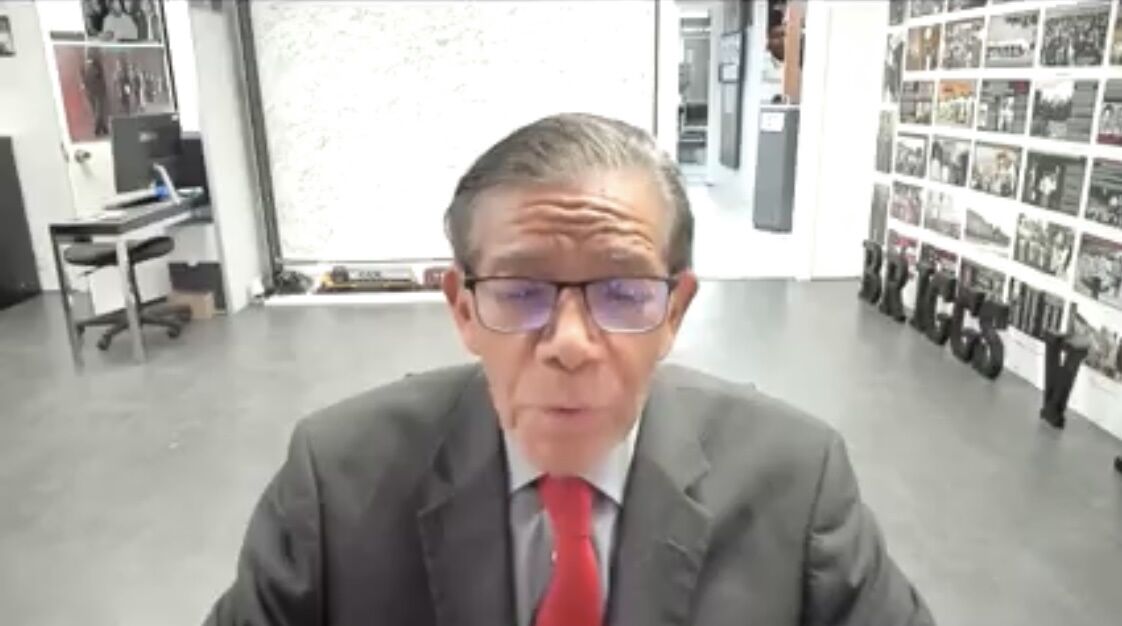Students carried big load in civil rights protests, noted photographer says
By: JALIAH ROBINSON
Feb 25, 2022

Cecil Williams speaks during a virtual conversation on the civil rights movement hosted by the I.P. Stanback Museum and Planetarium.
Student advocacy and South Carolina's role in the civil rights movement are overlooked, a civil rights photographer said.
I.P. Stanback Museum and Planetarium hosted a virtual conversation with Cecil Williams on Feb. 17. The program concentrated on images by Williams documenting significant events in South Carolina during the civil rights movement.
“It’s bigger than me. It speaks to the hidden history,” Williams said. “We needed to know whose shoulders we stood on to make the advances in civil rights and human rights.”
Williams said so much of South Carolina’s history goes unrecorded, and he hopes his museum in Orangeburg and his pictures serve as a reminder that we represent the catalyst of the civil rights movement.
Students from Claflin University and South Carolina State University were the fuel behind the civil rights movement, Williams said, “We are not recognized, but we were very involved in that.”
Williams talked about a photograph titled "The Tree of Freedom," which is planted on the campus of Claflin University in front of the student center. In the photo, Claflin and SC State students stood together to protest the injustices in their community despite the SC State president's disapproval of students getting involved.
In a 1963 photograph of a protest at the Pink Palace located off John C. Calhoun Drive in Orangeburg, students are pictured gathered inside and around the back of the building. Williams said it is one of the largest demonstrations in civil rights history, with over 300 students being arrested.
"They were marching and protesting for freedom and justice,” Williams said. “And I'm hoping that the sacrifices they made can be recognized.”
With a picture of him holding shotgun shells, Williams highlighted the Orangeburg Massacre as one of the civil rights tragedies that often goes unheard of. Details surrounding the Orangeburg Massacre are often told inaccurately, he said.
“A lot of people even today think of the Orangeburg Massacre as being an event that actually happened at the bowling alley. ... It was not, the Orangeburg Massacre took place on the campus of South Carolina State University, very close to where today’s administration building is now," Williams said.
The city police, highway patrolmen and National Guard surrounded the gates of the university to prevent the students from leaving. “They came up the hill, on the campus of South Carolina State and ... unleashed gunfire that killed three students and injured 28."
He stressed that although we had other civil rights leaders, the students were the ones carrying the heavy load.
“They must be recognized for their sacrifices,” Williams said.
Williams spoke of how times have changed, but not by much. "In 2022, we are still fighting race,” Williams said.
"The pursuit of civil rights is still important,” Williams said. He mentioned Breonna Taylor, George Floyd and Ahmaud Arbery before stating that the list goes on and on with constant reminders that “we still have a way to go to create a colorblind society.”
If you want to know more about South Carolina’s role in the civil rights movement or book a tour at Cecil Williams’ South Carolina Civil Rights Museum, visit https://www.cecilwilliams.com/.